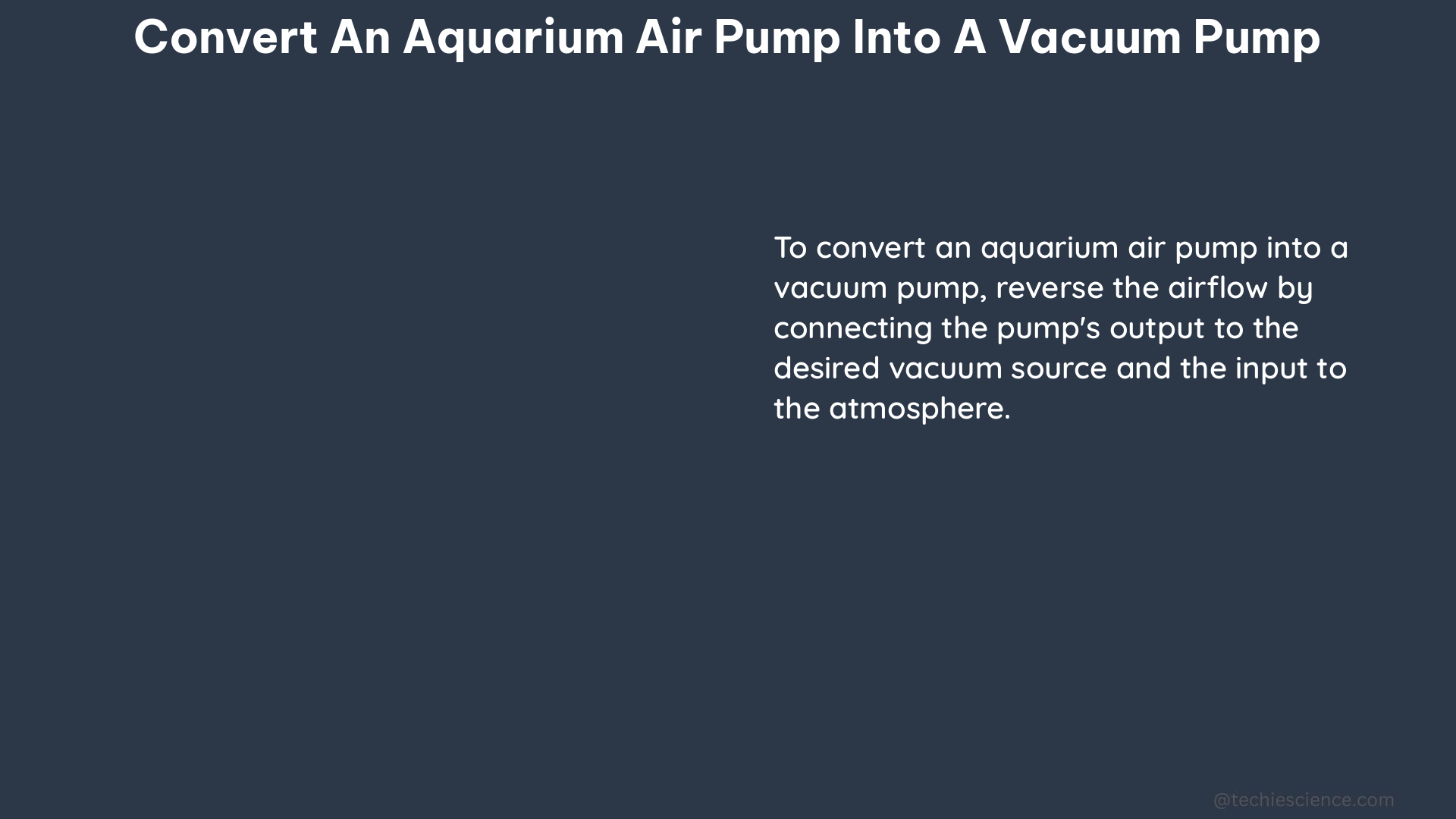Converting an aquarium air pump into a vacuum pump is a simple and cost-effective way to create a useful tool for various applications, such as positioning electronic components, de-soldering, and more. This comprehensive guide will walk you through the step-by-step process, providing detailed technical specifications and practical insights to help you successfully complete the conversion.
Understanding the Conversion Process
The key to converting an aquarium air pump into a vacuum pump lies in modifying the pump’s diaphragm and valves to reverse the airflow direction. By rotating the white plastic squares on the pump assemblies 180 degrees, you can change the direction of the airflow, transforming the pump from a pressure-based device to a suction-based one.
Necessary Tools and Materials

To complete the conversion, you will need the following tools and materials:
- Aquarium air pump
- Phillips screwdriver
- Needle-nose pliers (optional)
Step-by-Step Conversion Guide
-
Disassemble the Air Pump: Begin by unplugging the air pump and carefully removing the outer casing. This will expose the internal components, including the diaphragm and valves.
-
Identify the Valve Assemblies: Locate the white plastic squares on the pump assemblies. These are the valves that control the airflow direction.
-
Rotate the Valve Assemblies: Using the Phillips screwdriver, gently pry the white plastic squares off the pump assemblies. Rotate them 180 degrees and reattach them, ensuring they are securely in place.
-
Reassemble the Pump: Carefully reassemble the air pump, making sure all the components are properly aligned and secured.
-
Test the Vacuum Functionality: Plug in the modified air pump and observe the airflow. You should now notice that the pump is creating a vacuum instead of pushing air out.
Technical Specifications of the Converted Vacuum Pump
- Airflow Direction: Reversed, from pushing air out to creating a vacuum
- Vacuum Strength: Relatively weak, suitable for simple tasks like picking up electronic components
- Conversion Time: Approximately 5 minutes
- Noise Level: Comparable to the original air pump, typically around 50-60 dB
- Power Consumption: Unchanged from the original air pump, typically ranging from 2-5 watts
Practical Applications and Limitations
The vacuum produced by the converted aquarium air pump is not as strong as a commercial vacuum pump, but it can still be useful for a variety of tasks, such as:
- Positioning and holding electronic components during assembly or repair
- Assisting with de-soldering and component removal
- Cleaning small spaces and hard-to-reach areas
- Holding small objects in place for precision work
It’s important to note that the vacuum strength may not be sufficient for more demanding applications, such as lifting heavy objects or creating a strong seal. In such cases, a more powerful commercial vacuum pump may be required.
Troubleshooting and Maintenance
If you encounter any issues with the converted vacuum pump, such as reduced suction power or air leaks, consider the following troubleshooting steps:
- Ensure the valve assemblies are properly rotated and securely in place.
- Check for any cracks or damage in the pump’s diaphragm or housing.
- Clean the pump’s internal components to remove any debris or buildup.
- Verify that the power supply is functioning correctly and providing the appropriate voltage.
Regular maintenance, such as cleaning the pump and replacing the diaphragm if necessary, can help extend the lifespan of your converted vacuum pump.
Conclusion
Converting an aquarium air pump into a vacuum pump is a simple and cost-effective DIY project that can provide a useful tool for a variety of applications. By following the step-by-step guide and understanding the technical specifications and limitations of the converted pump, you can create a customized vacuum solution tailored to your needs. Whether you’re working on electronics, cleaning small spaces, or requiring a gentle suction force, this converted vacuum pump can be a valuable addition to your toolbox.
References
